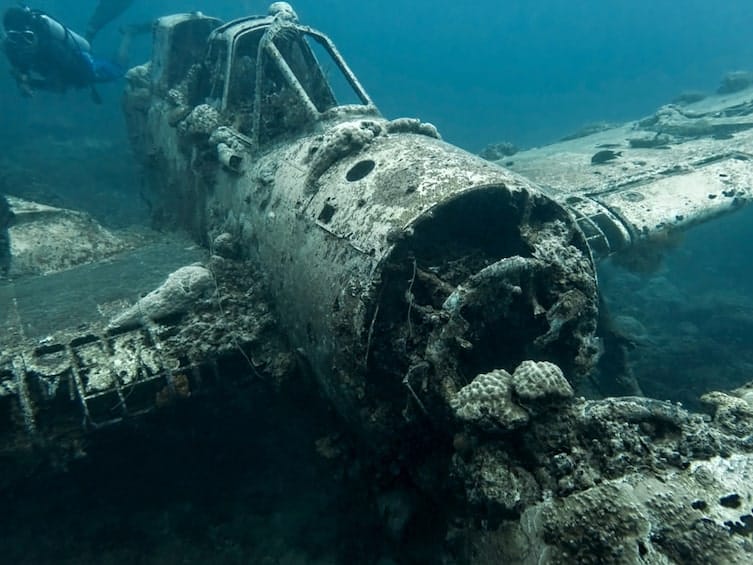The most interesting facts about Palau, from millions of harmless jellyfish to stone monoliths known as the ‘Easter Island of Micronesia’.

Fast facts
Official name: Republic of Palau
Capital city: Ngerulmud
Population: 21,685
Area: 459 sq km
Major languages: Palauan, English
Time zone: UTC+9 (Palau Time)
– Source: CIA World Fact Book
Interesting facts about Palau
1. Palau is an island nation in Oceania consisting of six island groups, totalling over 300 islands altogether.
– Source: CIA World Fact Book
2. By population, Palau is the world’s third-smallest sovereign country after Tuvalu and Nauru. Technically, the Vatican City is also smaller but it is not a UN member state.
– Source: World Bank
3. It is thought the first inhabitants of Palau arrived from present-day Indonesia around 2500 BC. The early Palauans developed complex social systems and practised fishing and farming.
– Source: BBC News
4. In 1783, English captain Henry Wilson was shipwrecked on a reef on one of Palau’s islands, becoming the first European to visit.
– Source: BBC News
5. For over 200 years Palau was controlled by foreign influences including Spain, Britain, Germany, Japan and the US.
– Source: BBC News
6. During the Second World War, parts of Palau were occupied by Japan. US forces liberated the islands during the Battle of Peleliu in 1944, which resulted in a higher death toll than any other amphibious assault in US military history.
– Source: History Channel

7. From 1947 to 1994, Palau was part of the Trust Territory of the Pacific Islands (TTPI), a United Nations trust territory administered by the USA.
– Source: Encyclopedia.com
8. In 1994, Palau finally gained complete independence. It would continue to receive financial aid from the US, and in return, the US could continue to operate military bases in Palau.
– Source: Washington Post
9. In 2017, Palau became the world’s first country to require tourists to sign an ‘Eco-Pledge’ upon arrival. Every incoming visitor must sign a stamped pledge in their passports to be a good environmental steward throughout their stay.
– Source: National Geographic
10. Additionally, there is a compulsory in-flight video that instructs all incoming visitors about how to behave environmentally responsibly during their stay. There is also a checklist of dos and don’ts that is issued upon arrival.
– Source: National Geographic
11. In 2020, Palau also banned ‘reef-toxic’ sunscreens. Believed to be another world-first, the environmental initiative is aimed at stopping chemical pollution damaging corals and marine life.
– Source: The Guardian
12. Palau is home to Jellyfish Lake, a land-locked marine lake filled with 5 million non-stinging transparent jellyfish that swim en masse to follow the path of the sun.
– Source: National Geographic

13. Palau is known as ‘the underwater Serengeti’ for its incredible scuba diving. Sights include beautiful seascapes, shipwrecks and diverse marine life.
– Source: Lonely Planet
14. Palau, like many Pacific island nations, has one of the fattest populations in the world. In 2017 a report ranked Palau as the world’s 2nd most obese nation after Nauru.
– Source: World Health Organisation
15. The world’s first shark sanctuary was created in Palau in 2009. The country banned all commercial shark fishing in its waters to combat the growth of shark fishing.
– Source: The Telegraph
16. One of Palau’s most famous landmarks, and the country’s only UNESCO World Heritage Site, is the Rock Islands. The site is made up of hundreds of uninhabited limestone islands amidst turquoise lagoons surrounded by coral reefs. Many of the islands display unique mushroom-like shapes.
– Source: UNESCO

17. Palau’s has a simple flag composed of a blue background with an off-centre golden disk. The disk represents the moon, which has special meaning in Palauan culture. The full moon is traditionally considered the best time for fishing, planting and other activities.
– Source: Britannica
18. The blue background in the flag is not, as might be assumed, a symbol of the Pacific Ocean. Instead, it relates to “the final passage of the foreign administering authority from our land” – a reference to the country’s time as a United Nations’ trust territory.
– Source: Britannica
19. The Milky Way, a cove located in the Rock Islands, is famous for the white mud found on its seabed. The mud is said to have healing and anti-ageing properties and can be used in natural spa treatments.
– Source: Lonely Planet, Wanderlust Magazine
20. Palau is one of just 22 countries not to have a military. As a former US-administered territory, Palau did not form an army after gaining independence. Instead, the USA is responsible for its defence.
– Source: The Atlantic
21. Known as the ‘Easter Island of Micronesia’, the Badrulchau Stone Monoliths in Palau are a collection of 38 stone monoliths, 28 of which had human features. The stones are dated to around 161 AD. Their purpose and origin is unexplained, but legends suggest gods placed them to support a bai (men’s meeting house).
– Source: Ancient History Encyclopedia, Lonely Planet

22. Saltwater crocodiles are native to Palau. Saltwater crocodiles have been called “the animal most likely to eat a human”, but attacks on people are rare in Palau.
– Source: National Geographic
23. Palau’s only prison is also a gift shop. Good-behaviour inmates are authorised to carve storyboards (carved wooden panels featuring Palauan legends) and sell them to the public.
– Source: Lonely Planet
24. As Palau is a low-lying country (the highest point is just 242m), it is under threat from rising sea levels caused by climate change.
– Source: The Independent
Every effort has been made to verify these facts about Palau. However, if you find an error or have any questions, please contact us.